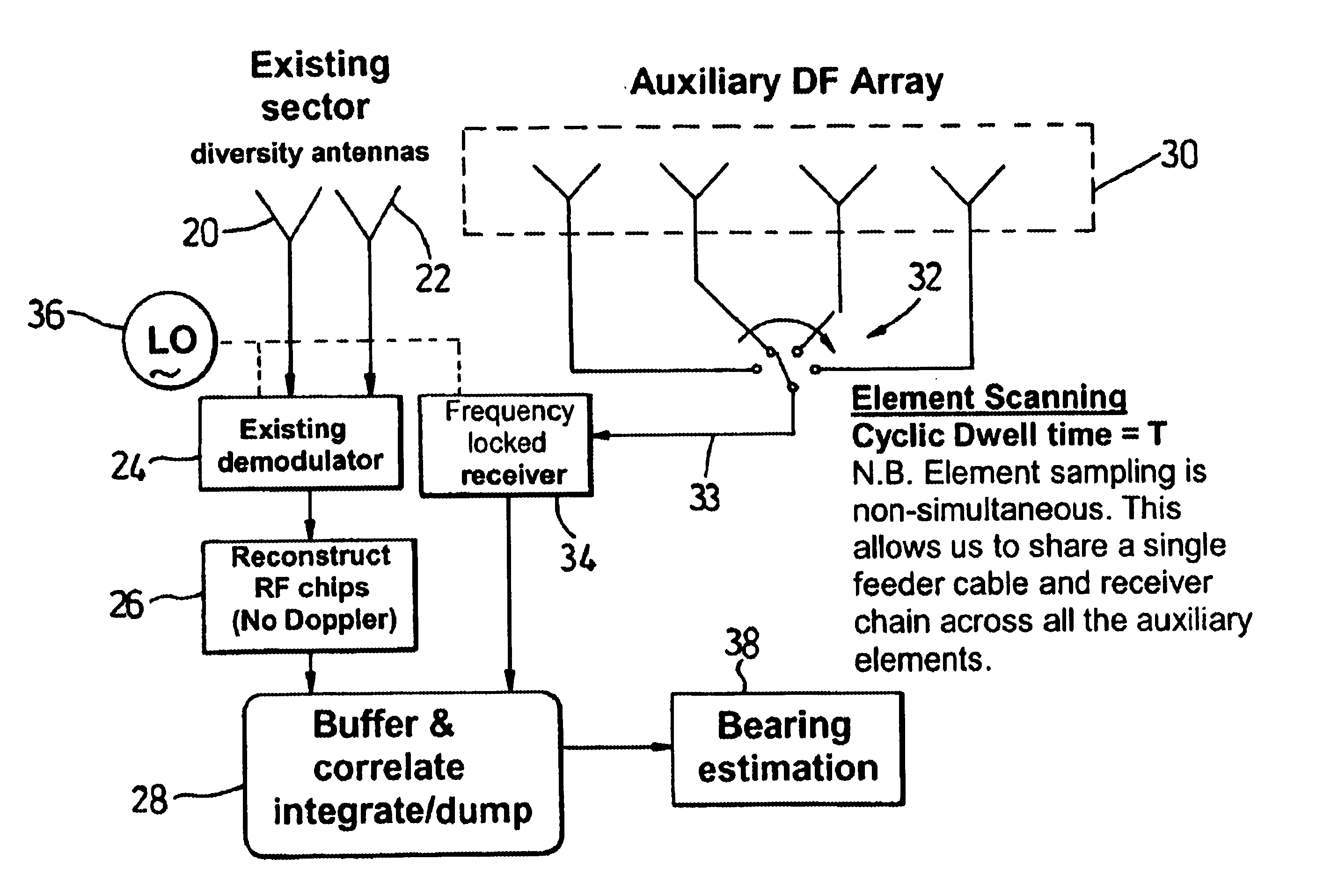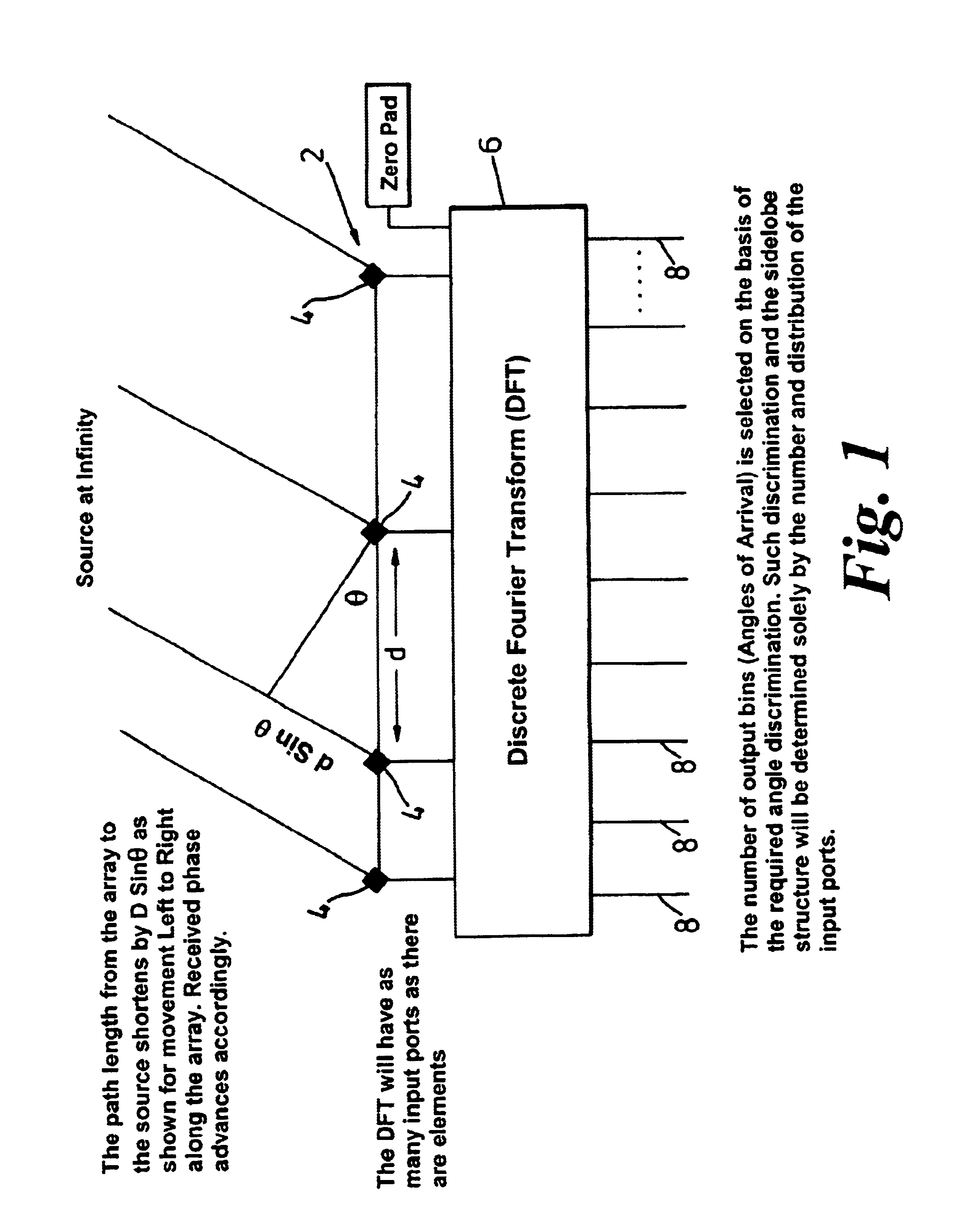Position location method and apparatus for a mobile telecommunications system
- Summary
- Abstract
- Description
- Claims
- Application Information
AI Technical Summary
Benefits of technology
Problems solved by technology
Method used
Image
Examples
Embodiment Construction
Specific embodiments of the invention will now be described by way of example with reference to the drawings, in which;
FIG. 1 illustrates the basic geometry of bearing estimation using a multi-element antenna array;
FIG. 2 illustrates the principles of the direction-finding method of a first embodiment of the invention;
FIG. 3 is a block diagram of a cell site according to the embodiment of FIG. 2;
FIG. 4 illustrates the source of bearing bias due to Doppler frequency offset in a multi-element antenna sampled through a commutating switch as in a further embodiment of the invention;
FIG. 5 illustrates the correction of Doppler frequency spread according to a further embodiment of the invention;
FIG. 6 is a space-time spectrum plot for two multipath signals with different Doppler offsets and spreads and the same angle of incidence.
FIG. 7 illustrates a four-element thinned (non-constant element spacing) array according to a further embodiment of the invention;
FIG. 8 illustrates a direction-...
PUM
 Login to View More
Login to View More Abstract
Description
Claims
Application Information
 Login to View More
Login to View More - R&D
- Intellectual Property
- Life Sciences
- Materials
- Tech Scout
- Unparalleled Data Quality
- Higher Quality Content
- 60% Fewer Hallucinations
Browse by: Latest US Patents, China's latest patents, Technical Efficacy Thesaurus, Application Domain, Technology Topic, Popular Technical Reports.
© 2025 PatSnap. All rights reserved.Legal|Privacy policy|Modern Slavery Act Transparency Statement|Sitemap|About US| Contact US: help@patsnap.com



